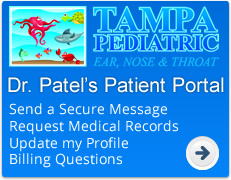|
|
 |
|||||||
Leukoplakia
CausesLeukoplakia is primarily a disorder of the mucous membranes of the mouth. It is caused by irritation. Lesions usually develop on the tongue, but they may also appear on the insides of the cheek. Irritation may result from rough teeth or rough places on dentures, fillings, and crowns. It may also result from smoking or other tobacco use (smoker's keratosis). Persons who smoke pipes are at high risk for developing this condition, as are those who hold chewing tobacco or snuff in the mouth for a long period of time. Leukoplakia patches may develop on the female external genital area, but the cause is unknown. Like other mouth ulcers, leukoplakia may become cancerous. The disorder is most common in the elderly. "Hairy" leukoplakia of the mouth is an unusual form of leukoplakia that is seen mostly in HIV-positive people. It may be one of the first signs of HIV infection. It can also appear in others when their immune systems are not working well, such as after a bone marrow transplant. It may be caused by the Epstein-Barr virus. White patches usually appear on the tongue and sometimes on other places in the mouth. The condition may look like thrush, a type of candida infection that is also associated with HIV and AIDS in adults. SymptomsThe primary symptom of leukoplakia is a skin lesion with the following characteristics:
The symptoms of hairy leukoplakia are painless, fuzzy, white patches on the tongue. Exams and TestsThe typical white patch of leukoplakia develops slowly, over weeks to months. The lesion may eventually become rough in texture, and may become sensitive to touch, heat, spicy foods, or other irritation. A biopsy of the lesion confirms the diagnosis. An examination of the biopsy specimen may find changes that indicate oral cancer. TreatmentThe goal of treatment is to eliminate the lesion. Removal of the source of irritation is important and may lead to disappearance of the lesion.
Some research has shown that vitamin A or vitamin E may shrink lesions, but this should only be administered with close supervision by a health care provider. Treatment of leukoplakia on the vulva is the same as treatment of oral lesions. Outlook (Prognosis)Leukoplakia is usually harmless, and lesions usually clear in a few weeks or months after the source of irritation is removed. Approximately 3% of leukoplakia lesions develop cancerous changes. Hairy leukoplakia is often a sign of HIV infection and an increased likelihood of developing AIDS. Possible Complications
When to Contact a Medical ProfessionalCall for an appointment with your health care provider if you have any lesions resembling leukoplakia or hairy leukoplakia. PreventionMinimize or stop smoking or other tobacco use. Have rough teeth treated and dental appliances repaired promptly. Safer sexual practices minimize the risk of contracting sexually-transmitted diseases, including HIV.
|
| © Tampa Ear, Nose & Throat Associates | Otolaryngology | 3000 Medical Park Drive, Suite 200, Tampa, FL 33613 Privacy Policy | Terms of Use | Notice of Non-Discrimination & Accessibility | Notice of Privacy Practices for PHI Allergies | Facial Rejuvenations | Head & Neck Surgery | Larynx Voice | Nose & Sinus | Office Based Procedures | Pediatric ENT | Snoring & Sleep Apnea Advanced Technology | Cerumen Removal | Septoplasty | Sinusitis | Swimmers Ear | Tinnitus | Tonsils & Adenoids | Vertigo Powered by MedCoData |

 Leukoplakia is a precancerous lesion that develops on the tongue or the inside of the cheek as a response to chronic irritation. Occasionally, leukoplakia patches develop on the female external genitalia.
Leukoplakia is a precancerous lesion that develops on the tongue or the inside of the cheek as a response to chronic irritation. Occasionally, leukoplakia patches develop on the female external genitalia. Surgical removal of the lesion may be necessary. The lesion is usually removed in your health care provider's office with the use of local anesthesia.
Surgical removal of the lesion may be necessary. The lesion is usually removed in your health care provider's office with the use of local anesthesia.